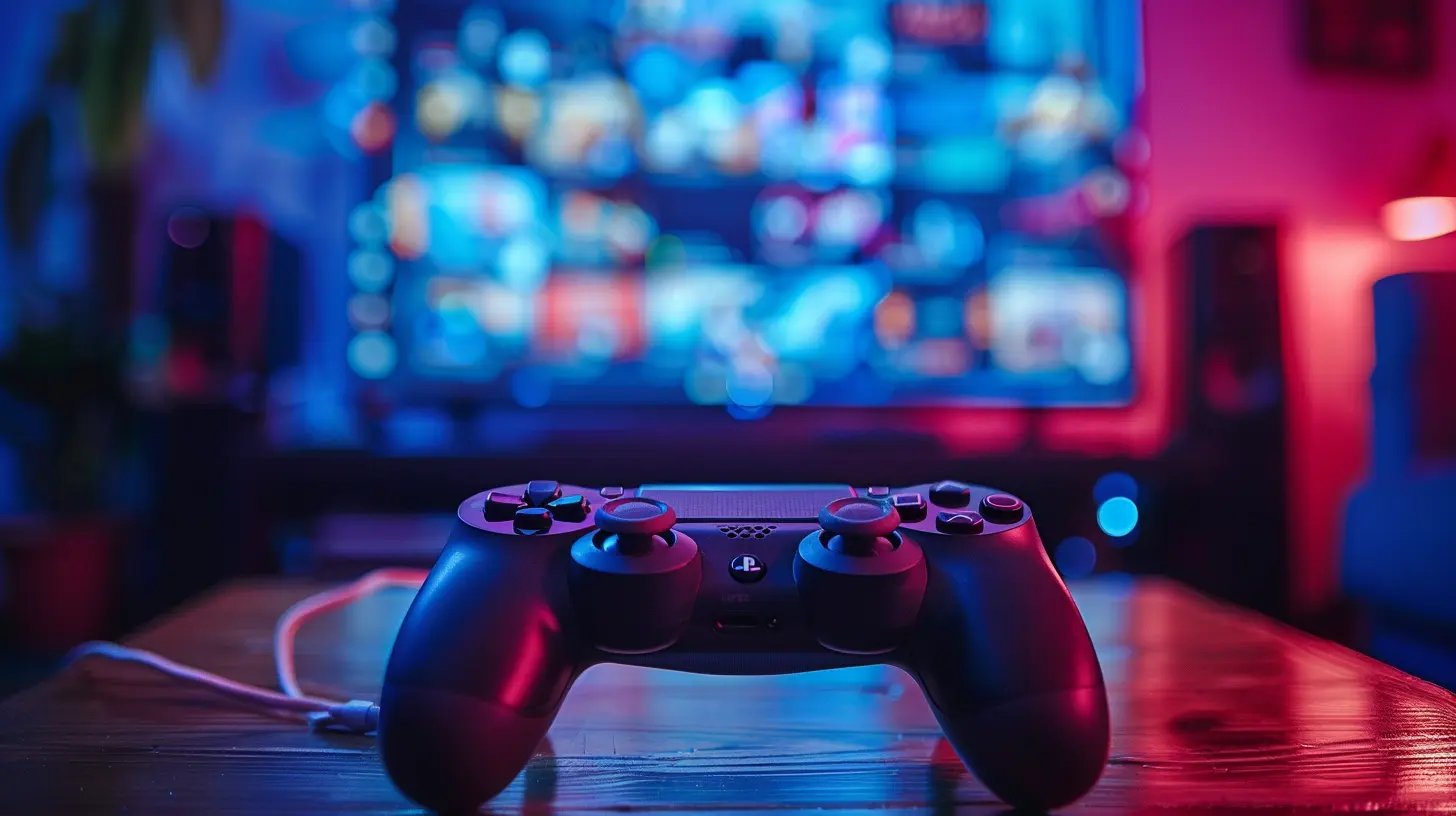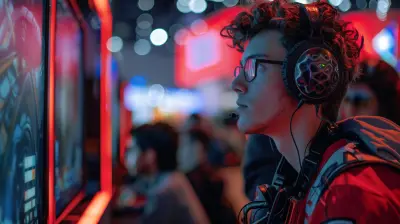The Power of Feedback: How Game UI/UX Design Drives Engagement
16 April 2025
Have you ever wondered why some games hook you from the moment you hit "Start," while others leave you feeling... meh? It’s not just about epic graphics or killer storylines. The unsung hero of every great game is its UI/UX design (that’s User Interface and User Experience, for the uninitiated). And at the heart of it all? Feedback.
Feedback in games is like the GPS for players. It tells you where you are, what you’re doing, and whether you’re crushing it or about to wipe out. When done right, feedback isn’t just functional—it’s fun. It creates a connection between the player and the game, a kind of magical loop that keeps you engaged for hours. Let’s break it down and uncover why feedback in UI/UX design is the real MVP when it comes to driving player engagement.
What Is Feedback in Game Design, Anyway?
Alright, let’s start with the basics. Feedback in game design is essentially how the game responds to what you do. This could be visual cues, audio effects, haptic feedback—anything that says, "Hey, we saw that, and here’s what happened because of it."Think of it like this: If you're cooking, feedback is the sizzling sound when you throw vegetables into a hot pan. It tells you, "Yup, you're doing it right." Without feedback, you’d just have silent vegetables and a lot of doubt. (Nobody likes silent vegetables, right?)
In gaming, feedback serves the same purpose. It keeps you informed, reassured, and most of all, excited. Whether it's the epic "LEVEL UP!" banner flashing across your screen or the heartbreaking sound of "Game Over," feedback lets you feel the game.
Why Feedback Matters in UI/UX Design
1. It Builds Immersion
Have you ever played a game where every action feels visceral? Like when you swing a sword, and you hear the ting of it hitting steel, or the rumble of your controller as your car screeches around a bend in a racing game? That’s feedback.Immersion is where feedback shines brightest. A well-designed interface seamlessly communicates with you, blurring the line between the game world and reality. Visuals, animations, sounds—all of these elements work together to make you forget you’re holding a controller or staring at a screen.
Take "The Last of Us", for instance. The slight tremble of Joel’s flashlight, the subtle changes in sound when enemies are nearby, the way UI elements fade in and out—everything is geared toward pulling you into its world. Without feedback, the experience would feel hollow.
2. It Guides the Player
We’ve all been there. You’re stuck in a game, wandering aimlessly because you have no idea what you’re supposed to do. Frustrating, right? That’s a textbook case of poor feedback.Good UI/UX uses feedback to guide players intuitively. Highlighted paths, glowing objects, or even subtle sound cues are clever ways games nudge you in the right direction without slapping you across the face with a "GO HERE" sign.
For example, in "Portal", the game’s minimalist UI focuses on visual feedback to educate players about puzzle mechanics. When you hit a button, something lights up, moves, or makes a sound, helping you connect the dots. It’s all about giving players just enough information to figure things out without spoon-feeding them.
3. It Rewards and Motivates
Let’s be real—half the reason we play games is for that sweet, sweet dopamine rush when we accomplish something. Feedback is the secret sauce that makes these moments rewarding.From the confetti explosion of victory in "Candy Crush" to the dramatic loot animations in "Diablo", games thrive on making players feel good. Feedback transforms mundane actions into moments of triumph.
But it’s not just about rewards; it’s also about pacing motivation. Small bits of feedback—like progress bars, XP meters, or quest pop-ups—push you to keep playing. They’re like a digital pat on the back, saying, “You’re doing awesome. Keep going.”
Types of Feedback in Game UI/UX Design
When we talk about feedback, it’s not a one-size-fits-all thing. Different types of feedback serve different purposes, and the best games layer them like a decadent feedback cake. Here are the main types:1. Visual Feedback
This is the most obvious kind—what you see on the screen. Think glowing health bars, flashing damage numbers, or environmental changes. Visual feedback is often immediate and is great for quick, clear communication.For instance, in "Dark Souls", the infamous "YOU DIED" screen is an instant (and soul-crushing) form of visual feedback. It tells you exactly what just happened—no ambiguity, no sugarcoating. It’s brutal but effective.
2. Audio Feedback
Ever noticed how satisfying it feels when a treasure chest opens with a magical jingle? That’s audio feedback in action. It not only reinforces what you see but also adds an emotional layer to the experience.Games like "Zelda" are masters of this. The iconic puzzle-solving chime isn’t just a sound; it’s a dopamine rush telling you, “You’re a genius!”
3. Haptic Feedback
This one’s for all the console and mobile players out there. Haptic feedback uses vibrations to simulate a sense of touch. It’s subtle but incredibly effective at creating immersion.In games like "Call of Duty", the rumble of gunfire or the tremor of an explosion adds a tactile dimension to the experience. It makes every action feel real and impactful.
4. Textual Feedback
Sometimes, words are the best way to communicate. Textual feedback is used sparingly, but when done right, it can be powerful. Think of quest descriptions, tutorial prompts, or even witty death messages.A perfect example? "Undertale". The game uses quirky, fourth-wall-breaking text to give feedback in ways that are unexpected and delightful.
How Feedback Drives Engagement
It Creates a Feedback Loop
Here’s where things get meta: feedback creates a feedback loop. (Whoa.) Every time the game responds to your actions, it triggers a reaction from you. You act again, and the game responds again. This loop is what keeps you engaged.Think of games like "Fortnite" or "Overwatch". The constant barrage of feedback—from hit markers to kill confirmations to victory animations—keeps you locked in a cycle of action and reward. It’s addictive in the best way.
It Reduces Friction
Nobody likes feeling lost or confused. Feedback smooths out the rough edges, ensuring players always know what’s happening and what to do next. This reduces frustration and keeps the fun flowing.Games like "Stardew Valley" excel at this. Every action, from planting seeds to harvesting crops, is met with satisfying sound effects and animations. It’s so smooth, you barely notice how much work you’re actually doing!
It Fosters Emotional Connections
Feedback isn’t just about mechanics—it’s about emotions. The right feedback can make you feel powerful, scared, triumphant, or even heartbroken.Take "Red Dead Redemption 2". The game’s subtle feedback, like a horse’s reactions or NPC dialogue, makes the world feel alive. It’s not just a game; it’s an emotional journey.
Don’t Overdo It: The Art of Balancing Feedback
Here’s the thing—too much feedback can be just as bad as too little. If a game is constantly bombarding you with pop-ups, sounds, and flashy visuals, it can feel overwhelming or even annoying. Balance is key.The best games keep feedback varied and context-sensitive. They know when to go big (like a boss fight victory) and when to dial it down (like exploring a serene environment). Striking this balance ensures feedback enhances the experience instead of distracting from it.
The Future of Feedback in Gaming
As technology evolves, so does feedback. With innovations like VR, AR, and AI, the potential for immersive feedback is huge. Imagine feeling the chill of a snowstorm in virtual reality or having AI adapt its feedback to your skill level in real-time. The possibilities are endless.But at the end of the day, the core principle of feedback remains the same: It’s about creating a dialogue between the player and the game. No matter how advanced things get, feedback will always be the bridge that connects us to the gaming worlds we love.
Final Thoughts
Feedback is the unsung hero of game UI/UX design. It’s what makes gameplay intuitive, rewarding, and downright addictive. Whether it’s a subtle sound cue or an in-your-face explosion of colors and confetti, feedback transforms games into experiences.So, the next time you’re glued to your screen, leveling up or completing that impossible quest, take a moment to appreciate the power of feedback. It’s the behind-the-scenes wizard making all the magic happen.
all images in this post were generated using AI tools
Category:
Game DevelopmentAuthor:

Avril McDowney
Discussion
rate this article
5 comments
Kennedy Marks
Ah, the mystical art of UI/UX design! It’s like crafting the perfect sandwich: too much mustard, and you’re left with a mess; too little, and it’s just bread! Here’s to designers who sprinkle just the right amount of pixels and feedback magic to keep us munching on the fun!
May 12, 2025 at 3:31 PM

Avril McDowney
Absolutely! Just like a perfect sandwich, successful UI/UX design balances elements to enhance user engagement—feedback is key to getting that recipe just right!
Sablethorn McQuiston
Design defines player loyalty!
April 27, 2025 at 2:38 AM

Avril McDowney
Absolutely! Thoughtful design enhances user experience, fostering deeper connections and long-term player loyalty.
Cora Myers
This article raises fascinating points about UI/UX design's role in gaming engagement! I wonder how different feedback mechanisms—like sound cues or visual indicators—affect player behavior. Have developers noticed trends in player responses to various design elements? I’d love to hear more about the data behind these design choices!
April 24, 2025 at 2:44 PM

Avril McDowney
Thank you for your thoughtful comment! Developers have indeed noticed trends in player responses to feedback mechanisms. Data shows that effective sound cues and visual indicators significantly enhance engagement and satisfaction, guiding player behavior and improving overall experience. I'd be happy to share more insights on this topic!
Leona Cain
“Game UI/UX design is like a magician’s wand: wave it right, and players are spellbound; wave it wrong, and they vanish faster than my willpower at a pizza buffet! Who knew a well-placed button could be the difference between a win and a ‘game over’?”
April 22, 2025 at 2:32 AM

Avril McDowney
Absolutely! Effective UI/UX design is crucial in keeping players engaged; the right elements can create a captivating experience, while poor design can lead to quick disengagement. It's all about that magical balance!
Izaak McCray
Feedback is the heartbeat of gaming! A well-crafted UI/UX transforms player experience, ignites engagement, and fosters communities. Let’s celebrate the art of design that empowers players and revolutionizes our gaming worlds for the better!
April 19, 2025 at 5:06 AM

Avril McDowney
Absolutely! Feedback shapes player experiences and enhances engagement. Effective UI/UX design truly empowers communities and elevates gaming to new heights. Thank you for your insights!




